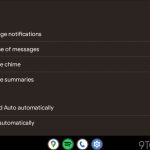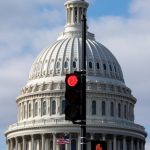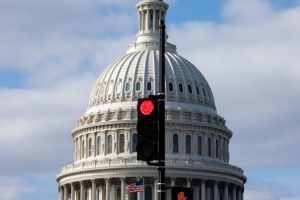A Florida jury team has recommended life in prison without the possibility of parole for Nikolas Cruz, the shooter in the 2018 Parkland massacre, after pleading guilty to murdering 17 people at Marjory Stoneman Douglas High School. ). Cruz avoided the death penalty that had been requested by the prosecution, a surprising decision for the families of the victims.
Nikolas Cruz avoided the death penalty for which he had all the aggravating circumstances, after committing a mass murder “in an atrocious manner”, which resulted in the death of 14 students, three members of the MSD school staff and the injury of 17 other people on February 14, 2018.
For the death penalty to be approved, it was necessary for the 12-member jury, made up of 7 women and 5 men, to vote in favor and unanimously, which did not happen. Despite the recommendation, the final decision will have to be made by Broward Circuit Judge Elizabeth Scherer at a hearing on November 1 in Miami.
Under Florida law, the judge cannot deviate from the jury’s recommendation, which said Cruz had several mitigating factors against the death penalty, including that he was 19 years old at the time of the attack, that his mother was alcoholic and who never received psychiatric care, despite having a serious clinical picture.
With this recommendation, a three-month trial ends, in which strong testimonies from the families of the victims, audiovisual evidence and the statement of Nikolas Cruz, who decided to enter the school in Parkland, Florida, were heard.
A year ago, the shooter pleaded guilty to committing the crime, confessing that he chose Valentine’s Day to make it impossible for his schoolmates to ever celebrate the holiday again.
During the trial, the prosecutor in the case, Michael Satz, stated that the crime was “premeditated, heinous and cruel.” Cruz’s case is considered the deadliest in US history to come to trial and the worst to occur in a school.

Cruz’s defense arguments
Lead defense attorney Melisa McNeill and her team have argued that Cruz committed a “horrible crime,” but justify this by claiming that her biological mother’s excessive drinking during pregnancy caused her to suffer serious mental illness.
The defense assures that Cruz grew up in difficult circumstances. One of the witnesses stated that he “had never seen a pregnant woman drink so much liquor,” referring to Brenda Woodward, the killer’s biological mother.
So the defense tried to argue that the shooting was the result of “inevitable” mental problems, a consequence of a condition known as fetal alcohol syndrome.
“His fate was sealed from the womb and in a civilized, humanitarian society, do we really kill people who are brain damaged, mentally ill, broken?” McNeill argued at one of the hearings.
Witnesses say that Cruz was a troubled child with aggressive behavior from childhood. His classmates had previously described him as “racist” and “psychopath.”
Cruz, now 24 years old, was adopted immediately after his birth, in an agreement between Roger and Lynda Cruz and their biological mother.
The adoptive father died when the shooter was 5 years old and, according to the testimonies collected for the hearings, his adoptive mother had a lot of difficulties raising Nikolas and his brother. Lynda Cruz died in November 2017, three months before the shooting.
The young shooter has been diagnosed with depression, attention deficit hyperactivity syndrome, emotional behavior disability, among others, according to records from the Department of Children and Families.
Thus, McNeill argued that the proposed death sentence for Cruz “will not change anything” and will not “bring the victims back.”
Cruz had the premeditated attack and it caused him emotion to carry it out
The prosecution turned to a forensic psychiatrist and a neuropsychologist to interview Cruz, since his defense was based on the killer’s mental aptitude. The two health professionals met with the defendant separately and later presented the recordings at the hearings.
In the material revealed by the prosecution, it was learned that Cruz had been planning the massacre for some time and that he used videos of previous shootings to train, such as the one from the Columbine school (1999) or the one from Virginia Tech (2007) to train.
“I studied multiple murderers and how they did it, their plans, what they had and what they used,” Cruz confessed serenely. Likewise, he told investigators that he couldn’t sleep the night before imagining “what the recoil of the semi-automatic rifle he used in the shooting would feel like.”
Prosecutor Satz concluded, some of the statements that the defendant wrote on his YouTube account were: ‘No mercy, no questions. I’m going to kill children. I would love to see families suffer.’
A fateful attack committed in less than five minutes
Cruz arrived in an Uber at the MSD school, where he was a student, on February 14, 2018 at around 2:20 p.m. in an Uber with an AR-15 semi-automatic rifle, purchased legally and which he had hidden in a bag along with several chargers. and ammunition.
The young man entered building 12 of the school two minutes after his arrival, stopped on a stairwell to disburse his weapon and warned a 15-year-old student who was passing by: you better get out of here, things will get worse. they’re going to be ugly.
Cruz then began shooting indiscriminately down a hallway, killing 11 people and wounding 13 others in just two minutes. At 2:22 p.m. the school fire alarm sounded to order an evacuation, while the directors called the police.
Quickly, Cruz set up a bipod to mount his gun in the staff room, with which he intended to shoot the campus sniper-style, however, he couldn’t break the windows because they were made of hurricane-resistant material.
Following the failed internship, Cruz discarded his rifle, escaped down another stairwell, and fled the scene toward the tennis courts, blending in with other students to evade police arriving at the crime scene.
The 19-year-old managed to flee to a nearby Walmart, where he stopped for a soda, where he was discovered by Officer Michael Leonard, who arrested him at 3:41 p.m. He immediately pleaded guilty to 17 counts of first degree murder and 17 counts of attempted murder.
After the attack, survivors and outraged civilians held vigils, protesting against the legal possession of weapons in the United States, creating Never Again MSD, a group of activists calling for an end to armed violence.
In addition to being one of the worst shootings in the history of the United States, Cruz’s case draws attention because normally this type of case ends with the death of the murderer and not in court.
With AP, Reuters and local media













